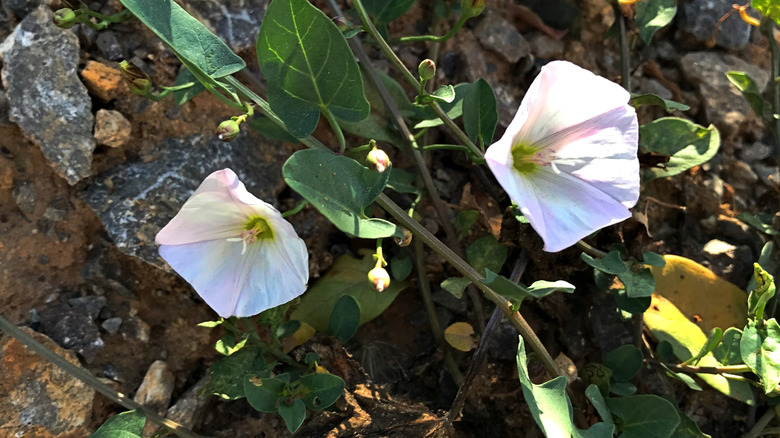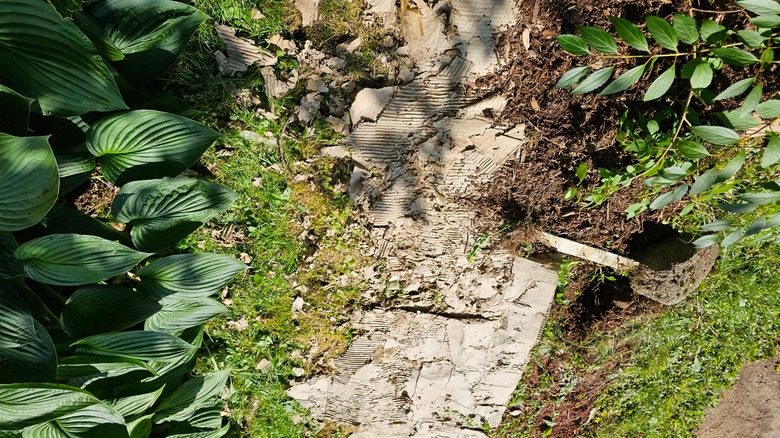The Best Way To Kill Bindweed And Keep It Out Of Your Garden For Good
You don't need to be a botanist to spot trouble in your garden. Just follow the vines. They're thin, wiry, and unnervingly determined, wrapping themselves around anything that dares to grow upright. First come the arrowhead-shaped leaves. Then, before you know it, white or pale pink trumpet-shaped flowers start popping up like they belong there. That's bindweed. Some call it "the garden strangler," and they're not wrong. Whether it's the large, fast-spreading hedge bindweed or its smaller but equally stubborn cousin, field bindweed, once it shows up, it rarely leaves easily. These aren't weeds you can just yank and forget. They're persistent and powered by a root system that operates like a survival machine. Every little fragment of root left behind is basically a restart button. That's why, if you're serious about getting rid of garden weeds as stubborn as bindweed, the most effective solution is cardboard mulching.
What makes bindweed so maddening is its talent for disguise and resilience. It can lurk unnoticed in bare soil, creep in from neighboring yards, and even sprout right through gravel. You might think you've pulled it all out, but a week later, it's wrapping around your sunflowers again like it never left. And while many gardeners waste years battling it above ground, the real solution lies beneath the surface (literally).
The most effective way to eliminate bindweed from your garden
If you've already tried tugging at bindweed by hand and watching it bounce back like it owns the place, it's time to give cardboard a try. Strange as it sounds, cardboard mulching is one of the most long-lasting ways to cut off bindweed at the root. It works because bindweed needs sunlight to survive, and when you block out that light completely, the plant's underground system begins to starve. Start by removing any visible growth from the surface. If the soil's dry, water it lightly to soften things up. Then, lay down thick, sturdy cardboard, ideally double-ply or several overlapping layers of single-ply, to cover every inch of affected ground.
Now comes the crucial part of mulching. A dense layer of organic matter, at least 4 to 6 inches thick, goes right on top of the cardboard. This could be bark, wood chips, straw, or composted material – essentially anything that keeps light out and moisture in. The beauty of this method is that you can plant into the mulch while the cardboard does its work underneath. Your plants' roots will break through the damp cardboard over time, but bindweed won't be able to fight its way back up to the light. For deeply infested areas, you may need to repeat the process once the cardboard begins to break down. Top it up. Cover it again. And in a season or two, you'll prevent bindweed from growing and reclaim your garden.

